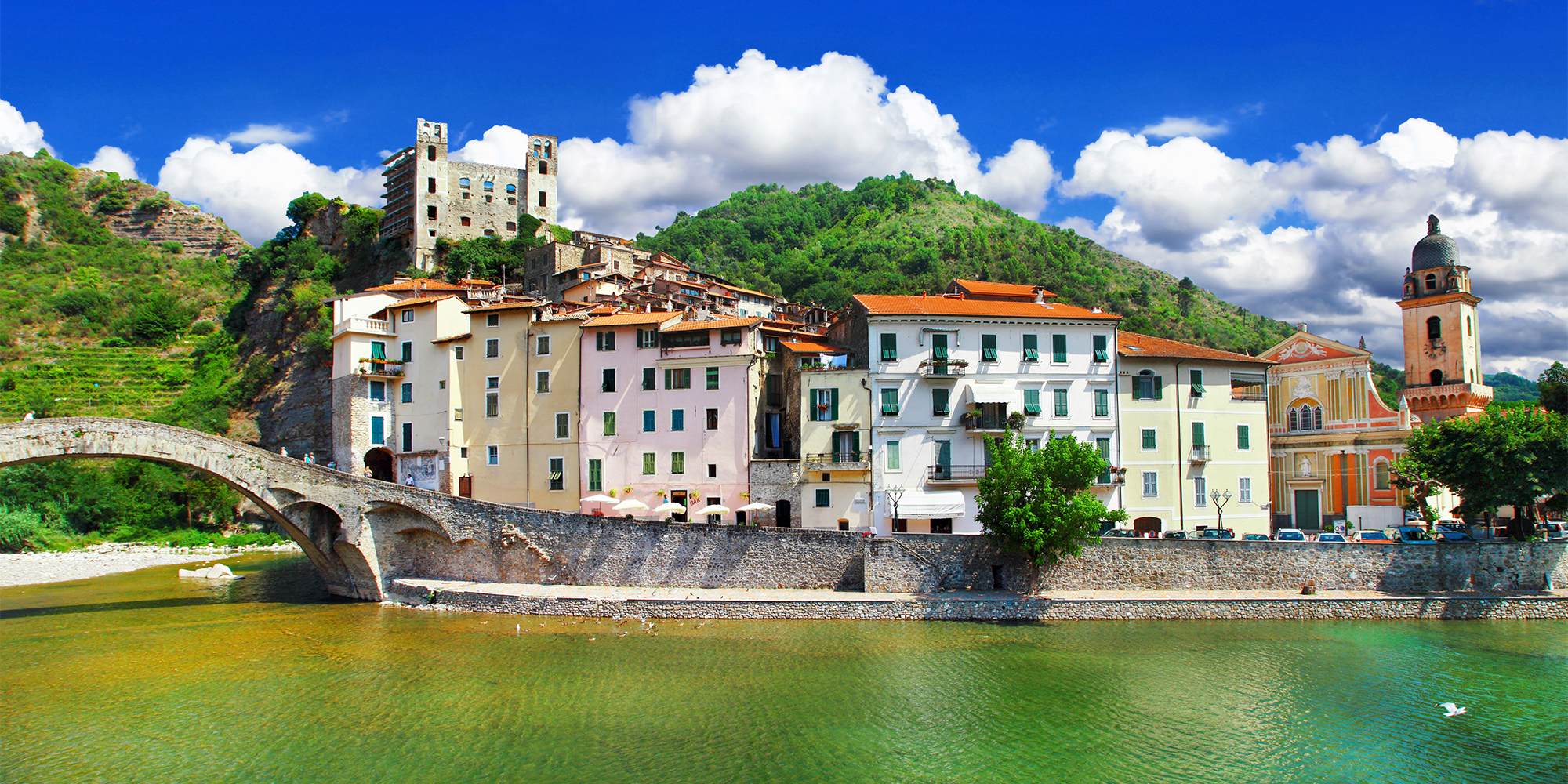
dolceacqua
Dolceacqua is a typical medieval village in the Nervia valley. The old town is dominated by the castle of the Doria family, Marquises of Dolceacqua, who resided there from 1276 to 1797; the modern part stretches out on the opposite bank of the Nervia stream, on either side of the road that cuts through the valley.
It’s a small town with just over 2,000 residents, but it’s rich in history, legends, traditions, art and culture. The oldest signs of settlement in the area date back to the Iron Age and are represented by the castellari, crude dry-stone fortifications consisting of concentric rings of walls that stood guard on the surrounding hills. Their remains are clearly visible to this day and can be visited.
The farmers’ hard work is evident in the terraced fields on the Ligurian hills, with dry-stone walls built to wrest small spaces from the land to till the soil and plant vines and olive trees. In fact, typical local products are the Taggiasca olive cultivar and the Rossese di Dolceacqua grape, which was granted D.O.C. status in 1971.
In addition to agricultural work, the history of Dolceacqua is rich in art and culture. Many nationally and internationally renowned artists come from this small town in the Nervia valley: notable painter Mario ‘Barbadirame’ Raimondo, a long-time pupil of Pablo Picasso, who often publicly praised him; Franco Giglio, an international artist specialising in mosaic murals, whose works have been exhibited and created in museums and city squares around the world; and Giovanni Morscio, a painter who was a success at the Salon des Indépendants in Paris and to whom we owe Dolceacqua’s Pinacoteca.
In addition to local artists, other world-famous figures chose Dolceacqua and its unique landscapes as a holiday destination and a place of inspiration for their work. Among these was the great painter and icon of Expressionism Claude Monet, who visited the town and was so struck by its beauty that he commented, “…the place is superb, there is a bridge that is a jewel of lightness” – a bridge that he would portray in one of his most famous works, alongside the magnificent Doria castle. Together with Monet, Renoir also visited Dolceacqua in 1883.

One of the Most Beautiful Villages in Italy
DOLCEACQUA
A medieval village in the heart of the Nervia valley, uniting history, legends, traditions, art and culture – from the Iron Age, through Monet, Renoir, and the Dorias, to the Rossese di Dolceacqua D.O.C.

Today known as the City of Roses
SAN BIAGIO DELLA CIMA
"San Giàixu", on the ridge of Monte Santa Croce, was first a fief of the Counts of Ventimiglia, then a municipality of the Republic of Genoa and a member of "La Magnifica Comunità degli Otto Luoghi" (The magnificent community of the eight villages).

Country pride
SOLDANO
Hidden in the upper Crosia valley to escape the raids of the Saracens, Soldano is a town of ancient origins with a history steeped in agriculture: it's nestled among wattle, broom, roses, Rossese grapes, and Taggiasca olive trees.
Contact us
Feel free to use this space to ask for clarifications, information or to report something. Thank you.

Antroposcene is the open-air Ethnographic Museum that narrates the widespread rural heritage of the local areas of Dolceacqua, San Biagio della Cima and Soldano. 34 km of paths, 20 points of interest, 6000 years of dialogue between man and nature. Stories of a rural construct to be protected, nature and community returning protagonists, ancient 'nomeranze' that have in the Flysch stone the common element uniting places and people. An ethno-anthropological journey guided by digital media and immersive dynamics that enhances and gives voice to the precious good that surrounds us.
Contact us
mail: info@antroposcene.it
address: Via Roma, 50, 18035 Dolceacqua IM
facebook: @antroposcene
instagram: @_antroposcene_
twitter: @antroposcene
[fts_instagram instagram_id=17841454580986702 access_token=IGQVJWUGdjMWs2TVkwOWF6QUg2OWt4ZAHNsbXppMklWdEo3ZAjBVV2h1S1EtSk9hN2N6SG42am11YWJidEF6d0R4Tm1lano2cTcwczh0bGdjVjlDZA3JXM0U0MlRnZAUtIaFJoUVNVclVR pics_count=4 type=basic width=100% height=auto super_gallery=yes columns=3 force_columns=no space_between_photos=1px icon_size=65px hide_date_likes_comments=no]
[fts_twitter twitter_name=@Antroposcene tweets_count=1 twitter_height=auto cover_photo=no stats_bar=no show_retweets=no show_replies=no]







